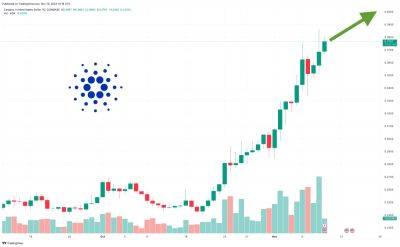Bitcoin Is Up Over 120% From 2022’s Lows – Here Is How High It Could Pump This Bull Market
Just under one year ago, the Bitcoin (BTC) market was in turmoil as panicky investors dumped their holdings in wake of the collapse of the cryptocurrency exchange FTX.
On November the 21st 2022, the BTC price hit its lowest level since late 2020 under $15,500, marking a 77% pullback from the all-time highs it hit in November 2021 at $69,000.
Whilst the collapse of FTX was the catalyst for Bitcoin’s final decline in 2022, an aggressive interest rate hiking cycle from the US Federal Reserve that caught the broader market off guard was arguably the main catalyst behind the 2022 bear market.
However, since late 2022, Bitcoin has enjoyed a stunning reversal of fortunes.
At current levels just under $35,000, its price is up more than 120% from the 2022 lows and the cryptocurrency’s pullback from its 2021 highs is now closer to 50%.
Bitcoin’s 2023 resurgence is striking given that the macro landscape hasn’t improved much this year.
Amid continued strong performance of the US economy, the Fed has continued to lift interest rates in 2023 (albeit, much more slowly and cautiously) and yields on long-term US government bonds are at multi-decade highs.
Whilst a sudden tightening of financial conditions in 2022 was a key reason for Bitcoin’s 2022 bear market, the cryptocurrency has seen a strong recovery in 2023 despite financial conditions not loosening.
Mean reversion is likely one reason why the Bitcoin market has recovered so much this year, with various metrics showing that the market became historically oversold in wake of the FTX implosion.
For example, as per Glassnode, Bitcoin’s Market Value Realized Value (MVRV) Ratio briefly fell under 0.8 last November, something which has rarely happened in the cryptocurrency’s history and has
Read more on cryptonews.com






















